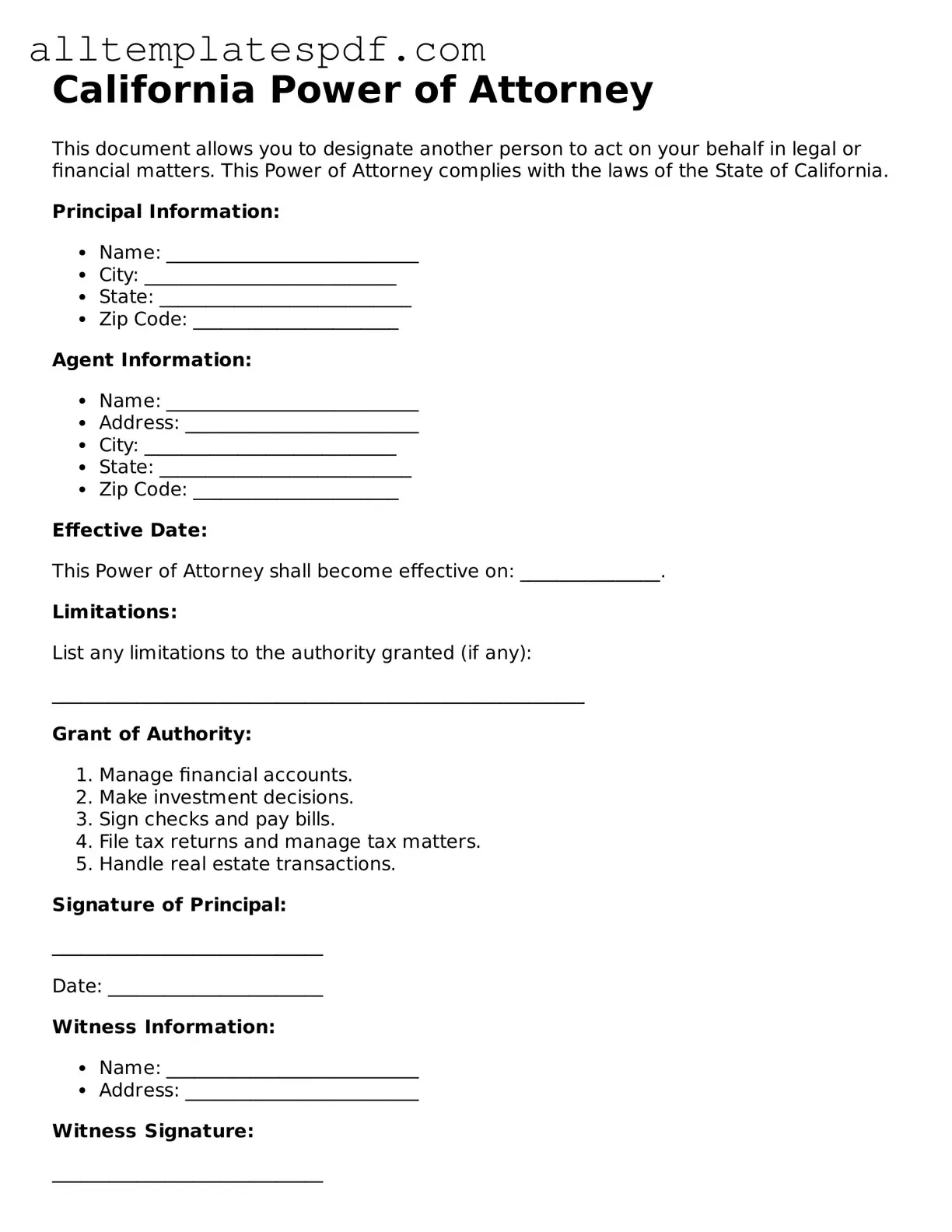Filling out a California Power of Attorney form can be straightforward, but many people make common mistakes that can lead to complications down the line. One frequent error is not specifying the powers granted to the agent clearly. The form allows you to choose specific powers, such as managing finances or making healthcare decisions. If you leave this section vague or unchecked, your agent may not have the authority to act on your behalf when needed.
Another mistake often seen is failing to date the document. A Power of Attorney is only valid if it is signed and dated. Without a date, there could be confusion about when the powers were granted, leading to potential disputes or challenges regarding the authority of the agent. Always ensure that the date is clearly marked to avoid any ambiguity.
Many individuals also overlook the importance of having the Power of Attorney notarized. While not always required, notarization can provide an extra layer of validation. Some institutions may refuse to accept a Power of Attorney unless it is notarized. Therefore, it’s wise to check the requirements of the institutions where the document will be used.
Another common pitfall is neglecting to inform the agent about their responsibilities. It’s crucial to have a conversation with the person you are appointing as your agent. They should understand what powers you are granting them and be prepared to act in your best interest. Failing to communicate this can lead to misunderstandings and mismanagement of your affairs.
Lastly, people often forget to review and update their Power of Attorney as life circumstances change. Major life events such as marriage, divorce, or the birth of a child may necessitate changes to your Power of Attorney. Regularly reviewing this document ensures it reflects your current wishes and that your chosen agent is still the right fit for your needs.
